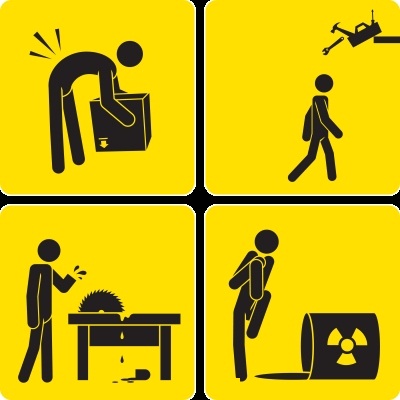
|
Biophotoacoustic Laboratory
Physical Engineering Department
Science and Engineering Division
|
|
|
Chemical Safety
-
INTRODUCTION
The hazards of chemicals vary widely, and appropriate precautions must always be used. Every chemical can be hazardous
in certain circumstances.
Supervisors and Principal Investigators have primary responsibility for implementation of chemical safety policies and
procedures. Students and staff are responsible for following procedures. Planning for and implementation of chemical
safety must be part of every laboratory activity in which chemicals are used.
-
LABORATORY FUME HOODS
Laboratory fume hoods are one of the most important used and abused hazard control devices on campus. We should all
understand that the combined use of safety glasses, protective gloves, laboratory smocks, good safety practices, and
laboratory fume hoods are very important elements in protecting us from a potentially hazardous exposure.
Laboratory fume hoods only protect users when they are used properly and are working correctly. A fume hood is designed
to protect the user and room occupants from exposure to vapors, aerosols, toxic materials, odorous, and other harmful
substances. A secondary purpose is to serve as a protective shield when working with potentially explosive or highly
reactive materials. This is accomplished by lowering the hood sash. If you believe your hood is not working properly
contact the Director at (477) 788 51 00 Ext. 8415 for an evaluation.
-
Guidelines for Using a Hood Effectively
- Check to be sure the hood has been inspected within the last 12 months.
- Read the Safety Data Sheets for materials being used in a hood. Note the physical, chemical, and toxicological
properties of materials being used before hand.
- Turn on the light for proper illumination.
- Keep the hood clear of clutter and unused materials. Do not use a hood for long term storage. Storage reduces
air flow and compromises hood capture efficiency.
- All work should be done at least six inches from the front of the hood.
- When large equipment is used, place on blocks to allow for a two inch air flow gap under the equipment.
- Always lower the sash when not working in the hood.
- Never place your head in the hood while an experiment is on going.
- Avoid quick movements while working or passing in front of the hood. Rapid movements may cause turbulence
or a backwash resulting in hazardous vapor escape.
- Campus Facilities Maintence can adjust the baffle according to the nature of the work:
- For hot or lighter than air compounds, position the baffle to exhaust from the top of the hood.
- For normal operations, place the baffle in the center position.
- For work with heavier than air compounds place the baffle to exhaust the majority of the air from the bottom vent.
- Fume hoods are not to be used for disposal of unwanted material. The cap of the unwanted materials bottle must seal the container.
- Hoods designated for radioactive material use need to be approved by Radiation Safety before use.
- Use of perchloric acid must be in a properly operating Perchloric Acid Hood with water wash capabilities.
-
Risks
A fume hood is a piece of safety equipment that can be misused to the extent that they can be less effective than expected.
Injury from misuse can arise from two causes.
- From the fume hood not providing adequate flow rates for the work required (i.e. sashed being left open or from excess
clutter that reduces the containment of noxious substances).
- From the hood itself (i.e. if the fan belts are slipping, the exhaust duct has blockage due to paper towels being sucked
into the duct, the duct damper is restricted).
Always realize the most likely person to be injured is the hood user. Escaping noxious material into the laboratory can also
effect all laboratory occupants.
-
Power Outages
In case of a power outage, the hood sash should be lowered within an inch to maintain a chimney effect to keep some air
flowing into the hood.
-
Exhaust
Care should be taken with use of paper products, aluminum foil, and other lightweight materials within a hood. For example,
a single paper towel or chemical wipe can potentially decrease the airflow into the hood if it restricts exhaust flow.
Please feel free to contact me if you have any questions, comments or suggestions for how we could provide more and
better information about this protocols and standars.
Safety first
Gerardo Gutiérrez Juárez, Ph. D.
Head of the Biophotoacoustic Laboratory
|
|
